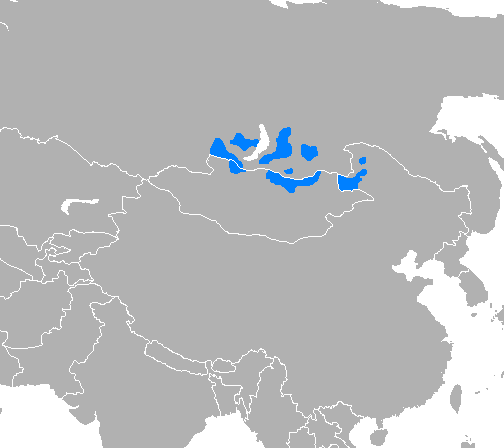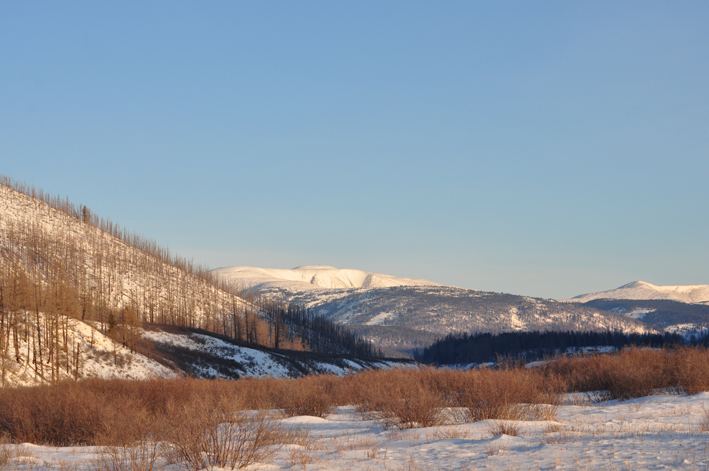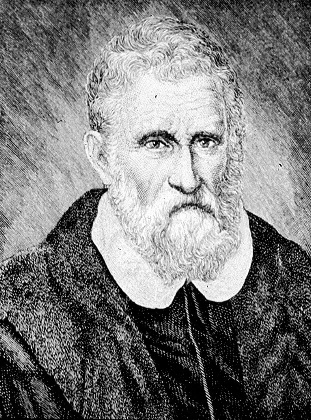|
Bankhar Dog
The Bankhar dog ( Buryat: хотошо, Mongolian: банхар, Russian: Бурят-монгольский волкодав), is a landrace livestock guarding dog. Originally bred by the Buryat people, their success contributed to their spread across Buryatia and Mongolia and into adjacent regions before they were nearly annihilated in the mid-20th Century. Bankhar dogs are prized for their intellect and perseverance even in hostile weather conditions. They are loyal and affectionate with their families, but formidable against intruders, including humans, wolves, eagles and snow leopards. Description Bankhar dogs are a large, formidable breed with either a short or long coat in red, black, and black and tan. Darker dogs with light spots above the eyes are preferred, these are known as Mongolian Four Eye Dogs. The distinct markings help to distinguish dogs from wolves in low light conditions and Mongolian legend states that these dogs can see into the spirit world. Despite th ... [...More Info...] [...Related Items...] OR: [Wikipedia] [Google] [Baidu] |
Buryat Language
Buryat, or Buriat (; Buryat Cyrillic: , , ), known in foreign sources as the Bargu-Buryat dialect of Mongolian, and in pre-1956 Soviet sources as Buryat-Mongolian,In China, the Buryat language is classified as the Bargu-Buryat dialect of the Mongolian language. is a variety of the Mongolic languages spoken by the Buryats and Bargas that is classified either as a language or major dialect group of Mongolian. Geographic distribution The majority of Buryat speakers live in Russia along the northern border of Mongolia where it is an official language in the Buryat Republic and was an official language in the former Ust-Orda Buryatia and Aga Buryatia autonomous okrugs. In the Russian census of 2002, 353,113 people out of an ethnic population of 445,175 reported speaking Buryat (72.3%). Some other 15,694 can also speak Buryat, mostly ethnic Russians. Buryats in Russia have a separate literary standard, written in a Cyrillic alphabet. It is based on the Russian alphabet with thr ... [...More Info...] [...Related Items...] OR: [Wikipedia] [Google] [Baidu] |
Mongolian Language
Mongolian is the official language of Mongolia and both the most widely spoken and best-known member of the Mongolic language family. The number of speakers across all its dialects may be 5.2 million, including the vast majority of the residents of Mongolia and many of the ethnic Mongol residents of the Inner Mongolia Autonomous Region of the People's Republic of China.Estimate from Svantesson ''et al.'' (2005): 141. In Mongolia, Khalkha Mongolian is predominant, and is currently written in both Cyrillic and traditional Mongolian script. In Inner Mongolia, the language is dialectally more diverse and is written in the traditional Mongolian script. However, Mongols in both countries often use the Latin script for convenience on the Internet. In the discussion of grammar to follow, the variety of Mongolian treated is the standard written Khalkha formalized in the writing conventions and in grammar as taught in schools, but much of what is to be said is also valid for ve ... [...More Info...] [...Related Items...] OR: [Wikipedia] [Google] [Baidu] |
Russian Language
Russian (russian: русский язык, russkij jazyk, link=no, ) is an East Slavic language mainly spoken in Russia. It is the native language of the Russians, and belongs to the Indo-European language family. It is one of four living East Slavic languages, and is also a part of the larger Balto-Slavic languages. Besides Russia itself, Russian is an official language in Belarus, Kazakhstan, and Kyrgyzstan, and is used widely as a lingua franca throughout Ukraine, the Caucasus, Central Asia, and to some extent in the Baltic states. It was the ''de facto'' language of the former Soviet Union, Constitution and Fundamental Law of the Union of Soviet Socialist Republics, 1977: Section II, Chapter 6, Article 36 and continues to be used in public life with varying proficiency in all of the post-Soviet states. Russian has over 258 million total speakers worldwide. It is the most spoken Slavic language, and the most spoken native language in Europe, as well as the ... [...More Info...] [...Related Items...] OR: [Wikipedia] [Google] [Baidu] |
Landrace
A landrace is a domesticated, locally adapted, often traditional variety of a species of animal or plant that has developed over time, through adaptation to its natural and cultural environment of agriculture and pastoralism, and due to isolation from other populations of the species. Landraces are distinct from cultivars and from standard breeds. A significant proportion of farmers around the world grow landrace crops., and most plant landraces are associated with traditional agricultural systems. Landraces of many crops have probably been grown for millennia. Increasing reliance upon modern plant cultivars that are bred to be uniform has led to a reduction in biodiversity, because most of the genetic diversity of domesticated plant species lies in landraces and other traditionally used varieties. Some farmers using scientifically improved varieties also continue to raise landraces for agronomic reasons that include: better adaptation to the local environment, lower fertilizer ... [...More Info...] [...Related Items...] OR: [Wikipedia] [Google] [Baidu] |
Livestock Guardian Dog
A livestock guardian dog (LGD) is a dog type bred for the purpose of protecting livestock from Predation, predators. Livestock guardian dogs stay with the group of animals they protect as a full-time member of the flock or herd. Their ability to guard their herd is mainly instinctive, as the dog is bonded to the herd from an early age. Unlike herding dogs which control the movement of livestock, LGDs blend in with them, watching for intruders within the flock. The mere presence of a guardian dog is usually enough to ward off some predators, and LGDs confront predators by vocal intimidation, barking, and displaying very Dog aggression, aggressive behavior. The dog may attack or fight with a predator if it cannot drive it away. History Herding dogs originated in Western Asia, on the territory of modern Iran and Iraq in association with the beginning of livestock breeding. Domestication of sheep and goats began there in the 8-7th millennium BC. Back then shepherding was a diffic ... [...More Info...] [...Related Items...] OR: [Wikipedia] [Google] [Baidu] |
Buryats
The Buryats ( bua, Буряад, Buryaad; mn, Буриад, Buriad) are a Mongolic ethnic group native to southeastern Siberia who speak the Buryat language. They are one of the two largest indigenous groups in Siberia, the other being the Yakuts. The majority of the Buryats today live in their titular homeland, the Republic of Buryatia, a federal subject of Russia which sprawls along the southern coast and partially straddles the Lake Baikal. Smaller groups of Buryats also inhabit Ust-Orda Buryat Okrug (Irkutsk Oblast) and the Agin-Buryat Okrug (Zabaykalsky Krai) which are to the west and east of Buryatia respectively as well as northeastern Mongolia and Inner Mongolia, China. They traditionally formed the major northern subgroup of the Mongols. Buryats share many customs with other Mongols, including nomadic herding, and erecting gers for shelter. Today the majority of Buryats live in and around Ulan-Ude, the capital of the Buryat Republic, although many still follow ... [...More Info...] [...Related Items...] OR: [Wikipedia] [Google] [Baidu] |
Buryatia
Buryatia, officially the Republic of Buryatia (russian: Республика Бурятия, r=Respublika Buryatiya, p=rʲɪsˈpublʲɪkə bʊˈrʲætʲɪjə; bua, Буряад Улас, Buryaad Ulas, , mn, Буриад Улс, Buriad Uls), is a republic of Russia located in Siberia. It is the historical native land of indigenous Buryats. Formerly part of the Siberian Federal District, it has been a part of the Russian Far East since 2018. Its capital is the city of Ulan-Ude, which means Red Gateway in Buryat Mongolian. Its area is with a population of 978,588 ( 2021 Census). Geography The republic is located in the south-central region of Siberia along the eastern shore of Lake Baikal. *Area: *Borders: **Internal: Irkutsk Oblast (W/NW/N), Zabaykalsky Krai (NE/E/SE/S), Tuva (W) **International: Mongolia ( Bulgan Province, Khövsgöl Province and Selenge Province) (S/SE) **Water: Lake Baikal (N) *Highest point: Mount Munku-Sardyk () Rivers Major rivers include ... [...More Info...] [...Related Items...] OR: [Wikipedia] [Google] [Baidu] |
Mongolia
Mongolia; Mongolian script: , , ; lit. "Mongol Nation" or "State of Mongolia" () is a landlocked country in East Asia, bordered by Russia to the north and China to the south. It covers an area of , with a population of just 3.3 million, making it the world's most sparsely populated sovereign nation. Mongolia is the world's largest landlocked country that does not border a closed sea, and much of its area is covered by grassy steppe, with mountains to the north and west and the Gobi Desert to the south. Ulaanbaatar, the capital and largest city, is home to roughly half of the country's population. The territory of modern-day Mongolia has been ruled by various nomadic empires, including the Xiongnu, the Xianbei, the Rouran, the First Turkic Khaganate, and others. In 1206, Genghis Khan founded the Mongol Empire, which became the largest contiguous land empire in history. His grandson Kublai Khan conquered China proper and established the Yuan dynasty. After the c ... [...More Info...] [...Related Items...] OR: [Wikipedia] [Google] [Baidu] |
Tibetan Mastiff
The Tibetan Mastiff ( bo, འདོགས་ཁྱི, THL: , Wylie: ) * Nepali: * Mongolian: * Hindi/ Garhwali/ Kumaoni: * Kashmiri: * Ladakhi: * Dzongkha: is a large size Tibetan dog breed. Its double coat is medium to long, subject to climate, and found in a wide variety of colors, including solid black, black and tan, various shades of red (from pale gold to deep red) and bluish-gray (dilute black), and sometimes with white markings around neck, chest and legs. Name The term ''mastiff'' was assigned by the Europeans who first came to Tibet because that name was used to refer to nearly all large dog breeds in the West. Early Western visitors to Tibet misnamed several of its breeds, such as the Tibetan terrier, which is not a terrier, and the Tibetan spaniel, which is not a spaniel. A better name for the breed might be the ''Tibetan mountain dog'' or—to encompass the landrace breed throughout its range—the ''Himalayan mountain dog''. Description Appearance ... [...More Info...] [...Related Items...] OR: [Wikipedia] [Google] [Baidu] |
Genghis Khan
''Chinggis Khaan'' ͡ʃʰiŋɡɪs xaːŋbr /> Mongol script: ''Chinggis Qa(gh)an/ Chinggis Khagan'' , birth_name = Temüjin , successor = Tolui (as regent) Ögedei Khan , spouse = , issue = , house = Borjigin , dynasty = Genghisid , regnal name = Genghis Khan () , temple name = Taizu () , posthumous name = Emperor Fatian Qiyun Shengwu () , father = Yesügei , mother = Hoelun , religion = Tengrism , birth_date = , birth_place = Khentii Mountains, Khamag Mongol , death_date = (aged 64–65) , death_place = Xingqing, Western Xia , burial_place = Unknown(presumptively Ikh Khorig, Burkhan Khaldun, Khentii Province) Genghis Khan (born Temüjin; ; xng, Temüjin, script=Latn; ., name=Temujin – August 25, 1227) was the founder and first Great Khan ( Emperor) of the Mongol Empire, which became the largest contiguous empire in history after his death. He came to power by uniting many of the noma ... [...More Info...] [...Related Items...] OR: [Wikipedia] [Google] [Baidu] |
Marco Polo
Marco Polo (, , ; 8 January 1324) was a Venetian merchant, explorer and writer who travelled through Asia along the Silk Road between 1271 and 1295. His travels are recorded in '' The Travels of Marco Polo'' (also known as ''Book of the Marvels of the World '' and ''Il Milione'', ), a book that described to Europeans the then mysterious culture and inner workings of the Eastern world, including the wealth and great size of the Mongol Empire and China in the Yuan Dynasty, giving their first comprehensive look into China, Persia, India, Japan and other Asian cities and countries. Born in Venice, Marco learned the mercantile trade from his father and his uncle, Niccolò and Maffeo, who travelled through Asia and met Kublai Khan. In 1269, they returned to Venice to meet Marco for the first time. The three of them embarked on an epic journey to Asia, exploring many places along the Silk Road until they reached Cathay (China). They were received by the royal court of Kublai Kha ... [...More Info...] [...Related Items...] OR: [Wikipedia] [Google] [Baidu] |






